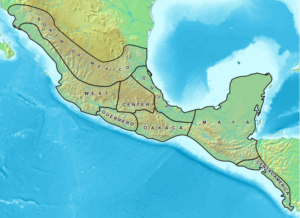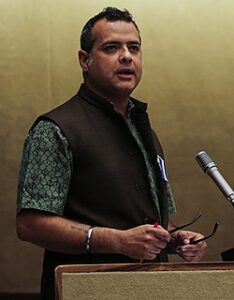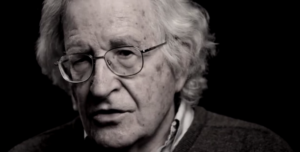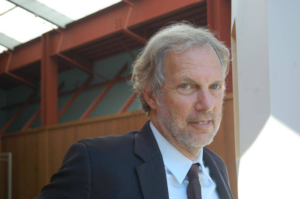Archaeology Is Flipping The Script On What We Know About Ancient Mesoamerica
Recent archaeology emerging from ancient Mesoamerica is flipping the script of public understanding about the people and institutions that inhabited this world: the evidence tells us that cooperative and pluralistic government was at least as common as and more resilient than despotic states.
This more complex picture and the achievements of Mesoamerica’s peoples are all the more impressive given the area’s rugged terrain and resource constraints. Compared to ancient Eurasia, the inhabitants of Mesoamerica—the region stretching from Costa Rica to central Mexico—lacked beasts of burden and wheeled transport, and the use of metals was generally limited.
Until recently, our understanding of how most societies and early states developed was heavily grounded in interpretations of urban societies in Eurasia. Despotic, coercive rule was assumed (except for ancient Athens and republican Rome), the actions of the elite were ascribed great importance, and core functions of the economy were presumed to be in the hands of the ruler.
Precolonial Mesoamerica doesn’t fit this cookie-cutter framework: neither was economic production or distribution centrally controlled by despotic rulers, nor was governance in societies with very large populations universally coercive.
This new perspective is the outgrowth of a decades-long shift in archaeological research’s focus from temples and tombs to regional settlement patterns, urban layouts, house excavations, domestic economies, and agricultural production.
By concentrating on the archaeological record, recent generations of researchers have brought fresh attention to features of precolonial Mesoamerica that did not fit entrenched stereotypes, many of which had their roots in the 19th century. Mesoamerica’s cities and large-scale societies arose independently of other global regions, spawned by their own regional populations. Mesoamerican technological development never experienced the centralizing impact of the monopolization of bronze weaponry through control of scarce tin deposits, nor the “democratizing” or “decentralizing” effects of the adoption of more widely available iron.
Mesoamerica was also spared the stark inequalities in military and transportation technology that appeared in Eurasia when some societies developed the chariot, serious naval capabilities, and fortified palaces while others lagged behind. In Mesoamerica, military might came through the control of large infantries using weapons crafted primarily from widely available stone, all of which made for generally more balanced political relations than in Eurasia.
Pre-Hispanic Mesoamerica is therefore emerging as an ideal place to examine the different ways that humans coalesced in urban contexts, in both collective and autocratic political formations, without some of the key factors that earlier scholars have traditionally seen as necessary or transformative for the rise of premodern societies.
How were these large, preindustrial urban centers in Mesoamerica organized? Were they long-lasting? And if so, what accounts for their comparative degrees of resilience across time?
In a 2018 study, we coded data from a carefully selected sample of 26 precolonial Mesoamerican cities and prominent political centers. We found that more than half of them were not despotically ruled and that the more collective political centers had greater resilience in the face of droughts and floods, and warfare or shifts in trade. Cities that addressed their social challenges using more collective forms of governance and resource management were both larger and somewhat more resilient than the cities with personalized rulership and more concentrated political power.
In general, collectively organized political centers relied more heavily on internal finance generation, such as taxes, as compared to the more autocratic centers that relied more on external financing, such as monopolized trade networks and war booty. The more that political elites can support themselves without relying on financing from the general population, the less they face accountability from the people, and the greater the likelihood that governance and power are hoarded. Additionally, higher levels of internal financing and communal resources often corresponded with evidence of the wider circulation of public goods and the bureaucratization of civic offices. Collectively organized centers with these features as well as spatial layouts, such as large open plazas and wide streets, that provided opportunities for householders and urban dwellers to communicate and express themselves seem to have fostered community persistence as major centers.
In a later study that included an updated and expanded sample of 32 well-researched Mesoamerican cities, we found that centers that were both more bottom-up and collective in their governance were more resilient. While some of these cities had palaces and monuments to rulers as their focal points, others featured more shared and equitably distributed forms of urban infrastructure. This includes apartment compounds, shared terraces or walls within neighborhoods, neighborhood plazas, temples and other civic buildings, and shared roads and causeways, all of which required cooperation and collective labor for their construction and maintenance and would have facilitated more regular face-to-face interaction and periodic public gatherings.
The implications of this archaeological research are too informative and powerful to stay put in textbooks. They resonate with evolving views of our present world, which are finding that public space, open communication, fair taxation, and effective bureaucracy can be cornerstones of well-being. These parallels with and understandings from the past can be insightful for us today as models to guide our future planning and identify the social models that best position us to survive the tests of time.
Author Bio:
Gary M. Feinman is an archaeologist and the MacArthur curator of anthropology at the Field Museum of Natural History in Chicago.
David M. Carballo is a professor of archaeology, anthropology, and Latin American studies and assistant provost for general education at Boston University.
Source: Independent Media Institute
Credit Line: This article was produced by Human Bridges, a project of the Independent Media Institute.
Why Are Archaeologists Unable To Find Evidence For A Ruling Class Of The Indus Civilization?
What we can learn from an ancient egalitarian civilization in the Indus Valley.
Little more than a century ago, British and Indian archaeologists began excavating the remains of what they soon realized was a previously unknown civilization in the Indus Valley. Straddling parts of Pakistan and India and reaching into Afghanistan, the culture these explorers unearthed had existed at the same time as those of ancient Egypt and Mesopotamia, and covered a much larger area. It was also astonishingly advanced: sophisticated and complex, boasting large, carefully laid out cities, a relatively affluent population, writing, plumbing and baths, wide trade connections, and even standardized weights and measures.
What kind of a society was the Indus Valley Civilization, as it came to be known? Who lived there and how did they organize themselves? Archaeologists and other experts ask these questions to this day, but the first explorers were already noticing some unique features.
In Mesopotamia and Egypt, “much money and thought were lavished on the building of magnificent temples for the gods and on palaces and tombs of kings,” observed Sir John Marshall, who supervised the excavation of two of the five main cities, Harappa and Mohenjo-daro, “but the rest of the people seemingly had to content themselves with insignificant dwellings of mud.” In the Indus Valley, “the picture is reversed and the finest structures were those erected for the convenience of the citizens. Temples, palaces, and tombs there may of course have been, but if so, they are either still undiscovered or so like other edifices as not to be readily distinguishable from them.”
In its heyday, from about BC 2600 to BC 1900, the Indus Valley Civilization created what may have been the world’s most egalitarian early complex society, defying long-held presumptions about the relationship between urbanization and inequality in the past. Its large cities were expansive, planned, and boasted large-scale architecture, including roomy residential houses, and smaller settlements in the surrounding areas appeared to support a similar culture with a similar standard of living.
The most tantalizing feature of the ancient Indus Valley remains is what they appear to lack: any trace of a ruling class or managerial elite. This defies the longtime theoretical assumption that any complex society must have stratified social relations: that collective action, urbanization, and economic specialization only develop in a very unequal culture that takes direction from the top, and that all social trajectories evolve toward a common and universal outcome, the state. Yet, here was a stable, prosperous civilization that appeared to remain that way for centuries without a state, without priest-kings or merchant oligarchs, and without a rigid caste system or warrior class. How did they manage it?
Unfortunately, in the early decades of exploration and research, archaeologists tended to assume that lack of evidence of a top-down, hierarchical society in the Indus Valley remains meant only that they had not yet been found. Some have argued that lack of evidence of inequality only indicates that the region’s ruling class was very clever at disguising the boundaries between itself and other social strata. Pointing to the fact that Indus Valley burial sites contain no monumental tombs, some researchers suggest that the rulers may have been cremated or deposited in rivers, as was the practice in other imperial cultures. But cremation is not archaeologically invisible; the remains of other cultures often include evidence of it.
More recently, archaeologists have been willing to go back to the original explorers’ observations and use the evidence directly in front of them to develop theories about ancient life in the Indus Valley Civilization. Archaeological data from South Asia has improved greatly: and there is much more of it. Numerous Indus sites are now known to archaeologists that decades ago were not, and the environmental contexts that enabled urbanization in the region—climate, natural resources—are now much clearer. Archaeologists have also honed a strong set of tools for identifying inequality and class divisions: from mortuary data, palace assemblages, aggrandizing monuments, written records, and soon, possibly, from household data. Yet, in a century of research, archaeologists have found no evidence of a ruling class in the Indus Valley that is comparable to those recovered in other early complex societies.
In the late 1990s, Indus archaeologists started to consider a new concept that seemed to better fit the facts. Heterarchy asserts that complex political organization, including cities, can emerge through the interaction of many different, unranked social groups, rather than from top-down decisions by an elite: that cooperation, not domination, can produce collective action. It’s now widely argued that multiple social groups contributed to the construction of Indus cities and the economic activities that took place in them, and that none seemed to dominate the others.
Bolstering this argument, no evidence exists that any group of Indus producers was excluded from the use of scarce materials that craftspeople had to obtain from long distances away, or that particular groups limited access to those materials to seize a higher position for themselves in Indus society. One of the most distinctive and technically dazzling products of the Indus culture are stamped seals engraved with imagery and text; over 2,500 have been found at Mohenjo-daro alone. But the seals were produced by many different groups of artisans in many locations, and there is no evidence that a ruling class controlled production. Technological styles tended to cross-cut different groups of artisans, indicating a great deal of openness and knowledge sharing.
Indus city-dwellers built large- and small-scale public buildings; the Great Bath at Mohenjo-daro is a massive structure that contained a large paved bath assembled from tightly fitted baked bricks, waterproofed with bitumen and supplied with pipes and drains that would have allowed control over water flow and temperature. At Mohenjo-daro, nonresidential structures were built atop brick platforms that were as substantial as the structures erected on top of them, and would have required a great deal of coordinated action. It’s been calculated that just one of the foundation platforms would have required 4 million days of labor, or 10,000 builders working for more than a year.
Yet, at both Harappa and Mohenjo-daro, these large nonresidential structures were relatively accessible, suggesting that they were “public,” as opposed to palaces or administrative centers restricted to a privileged class. Some of these may have served as specialized spaces for exchange, negotiation, and interaction between different groups clustered in neighborhoods or along important streets and roads. These spaces may have helped the city-dwellers maintain a high degree of consensus on planning and policy and ensured that no one group was able to accumulate wealth at the expense of the rest.
The Indus Valley remains have yet to yield all of their riches. The Indus script has yet to be deciphered, and we still don’t know why the civilization started to decline in the second millennium BC. One of the most positive recent developments has been a dramatic increase in data and interest in the civilization’s small-scale settlements, which may shed light on the question whether these settlements were qualitatively different from one another or from the cities—and how far Indus egalitarianism extended across its broader landscape.
What we have already found, however, suggests that egalitarianism may have been a boon to collective action: that distinct social groups may have been more willing to invest in collective action if the benefits were not restricted to a subset of elites. That suggests that heterarchy may act as a kind of brake on coercive power amongst social groups, and across society as a whole.
If this is the case, and after a century of research on the Indus civilization, archaeologists have not found evidence for a ruling class comparable what’s been recovered in other early complex societies, then it’s time to address the Indus Valley’s egalitarianism.
Urbanization, collective action, and technological innovation are not driven by the agendas of an exclusionary ruling class, the evidence suggests, and can occur in their total absence. The Indus Valley was egalitarian not because it lacked complexity, but rather because a ruling class is not a prerequisite for social complexity. It challenges us to rethink the fundamental connections between collective action and inequality.
The priest-king is dead: or, in this case, most likely never existed.
Why Turkey And Hungary Are Currently Blocking Sweden From Joining NATO
On July 11-12, 2023, the 31 members of the North Atlantic Treaty Organization (NATO) will hold their annual summit in Vilnius, Lithuania. To prepare for the summit, NATO Secretary General Jens Stoltenberg met with U.S. President Joe Biden to discuss the agenda for the summit. They spoke about the importance of Western support for Ukraine “for the long haul” and Stoltenberg told Biden that “he looks forward to welcoming Sweden as a full member of NATO as soon as possible.”
In their joint press conference on June 13, neither Biden nor Stoltenberg mentioned anything about Ukraine’s membership of NATO, although both hoped that Sweden would become a member, “hopefully….very shortly,” as Biden said. Despite noises in the German Bundestag from Christian Democratic members—such as urging by Roderich Kiesewetter—to bring Ukraine into NATO, there seems to be no appetite for any such move at present, least of all from German Chancellor Olaf Scholz who is being very cautious. Germany is wary of allowing Ukraine into NATO during a war, but has no problem—in principle—with Ukraine’s membership in NATO. With Sweden, the chessboard is far more complicated.
Finland Joins, but Not Sweden
In May 2022, Finland and Sweden applied to join NATO, a military alliance that had—at that time—consisted of thirty countries (the most recent entrant being North Macedonia in 2020). At that time, Stoltenberg said of the applications, “It is great to see you both.” Indeed, it was widely expected that these applications would be fast-tracked and that all four Scandinavian states would be within the military camp of NATO. Norway and Denmark were both founder members in 1949 (Denmark’s accession was particularly necessary so that the U.S. could build a vast base on Danish colonized Greenland—Pituffik Space Base, the northernmost U.S. military base—in 1951, displacing the local Inuit population).
Just short of a year later—on April 4, 2023—NATO welcomed Finland into the alliance. “Joining NATO is good for Finland,” said NATO’s Stoltenberg. “It is good for Nordic security, and it is good for NATO as a whole.” Finland shares a very long (832-mile) border with Russia, the longest border of any European Union or NATO state. By joining NATO, Finland has doubled the NATO-Russia border. Finland began to build a border fence along the “riskiest areas,” notably where Russian migrants might try to cross over. Social media in Finland mocked pictures released by the Border Guard of the fence, saying that it was just about useful for stopping horses; the “fence is not for horses,” responded Lieutenant Colonel Jukka Lukkari.
At the ceremony to welcome Finland into NATO, Finland’s President Sauli Niinistö said that his country’s membership is “not complete without Sweden.” Standing beside him, NATO’s Stoltenberg said, “I look forward to also welcoming Sweden as soon as possible.”
Why was Sweden not taken into the Western military alliance? In 1949, when NATO was established, the principle of decision-making adopted by the members was that of “consensus,” which means that all countries must agree to any decision; this consensus decision-making applies particularly to the question of membership. Two NATO members—Hungary and Turkey—ratified Finland’s entry into NATO but blocked that of Sweden. That they allowed NATO to welcome Finland, which—unlike Sweden—has a direct border with Russia, shows that it is not the war in Ukraine that troubles these two countries. They have other problems, directly with Sweden.
The Sweden Problem
At a press conference in Washington with U.S. Secretary of State Antony Blinken and NATO’s Stoltenberg, Vivian Salama of the Wall Street Journal asked, “Are you concerned that Turkey is increasingly becoming a disruptive ally?” Both Blinken and Stoltenberg ducked the question, which led Kylie Atwood of CNN to ask directly about NATO membership for Sweden. Stoltenberg obliquely noted Turkey’s concerns regarding the presence of the Kurdistan Workers’ Party (PKK) in Sweden. “All NATO allies are of course ready to sit down and address those concerns, including the threats posed to Turkey by PKK,” Stoltenberg said.
In 2009, when Sweden held the presidency of the Council of Europe, then-Prime Minister Fredrik Reinfeldt promised to shepherd Turkey into the European Union. Relations, at that time, were robust. Turkey’s war in recent years on the Kurdish minorities in the southeast of the country and in northern Syria roused the exiled Kurdish community in Sweden. Protests in Stockholm have annoyed Turkish President Recep Tayyip Erdogan, who has repeatedly called in the Swedish ambassador to Ankara to complain about these protests. When an effigy of Erdogan was burnt by the Rojava Committee of Sweden, Sweden’s foreign minister Tobias Billström wrote on Twitter, “Portraying a popularly elected president as being executed outside City Hall is abhorrent.” This statement was not sufficient. Sweden’s Prime Minister Ulf Kristersson said that his country had weak “anti-terror” laws and that his government was in talks with Ankara to see what could be done.
On his way to Azerbaijan on June 14, Erdogan dismissed the possibility that Sweden would be allowed to enter NATO this July.
In May 2023, Hungary’s president Viktor Orban went to Doha to attend the Qatar Economic Forum. He was asked why his ruling alliance, Fidesz-KDNP, which dominates the parliament (135 out of 199 seats), refuses to ratify Sweden’s entry into NATO. Orban bluntly said that he would not back down because “Sweden unfairly expresses a damaging opinion about the situation of democracy and the rule of law in Hungary.” Sweden is not alone in these concerns, which have been made very strongly by thirteen Hungarian intellectuals in a powerful book (“Igazságosság—demokrácia—fenntarthatóság”) last year.
Orban was very upset with Sweden for its support of a European Union parliamentary report from September 2022 that described the Hungarian political system as “a hybrid regime with parliamentary autocracy.” Unless Sweden revokes this attitude, Budapest says, it will not allow it to join NATO.
Where Are The World’s Water Stresses?

John P. Ruehl
Around the world, significant issues are negatively impacting water security. While the situation appears dire, cooperation initiatives show some signs of relief.
In May 2023, the Arizona Department of Water Resources imposed restrictions on the construction of new housing in the Phoenix area, citing a lack of groundwater. The decision aims to slow population growth in one of the fastest-growing regions in the U.S. and underlines the dwindling water resources in the drought-stricken southwest.
As water levels in the Colorado River have declined, the states dependent on it (Arizona, California, Colorado, New Mexico, Nevada, Utah, and Wyoming) are increasingly at odds over how to distribute the declining supply.
The U.S. is not alone in contentious domestic debate over water supplies. Australian states have constantly quarreled over water rights across the Murray-Darling Basin. Disruptions to water supply or perceived misuse can cause immediate social unrest, and countries like Iran and France have seen violent protests regarding water recently.
Constant and affordable access to fresh water is recognized as a basic human right by the UN. And in addition to providing a foundation for life, fresh water is also crucial for industry and manufacturing, energy production, agriculture, sanitation, and other essential societal functions.
But around the world, its availability is threatened. Desertification, climate change, man-made water diversion, dam building, pollution, and overuse have seen rivers, lakes, and aquifers dry up. Since 2000, the world has added almost 2 billion people, putting further strain on global water infrastructure and supplies.
Poor water management and infrastructure also play a major role in water scarcity around the world. In Iraq, up to 14.5 percent of the country’s water is lost to evaporation and two-thirds of its treated water is lost due to leaks and poor infrastructure. Up to 25 to 30 percentof South Africa’s water is lost to leaks, while even in many industrialized countries, up to 15 to 20 percent of water supply is lost.
Inequality can also exacerbate water stress. Amid Cape Town’s water shortages in recent years, 14 percent of the population has been found to be responsible for more than half of the freshwater use in the city. Across Africa, one in three people already faces water scarcity, where “the availability of natural hygienic water falls below 1,000 m3 per person per year.”
On top of government control of water supply and infrastructure, multinational companies like Nestlé S.A., PepsiCo, Inc., the Coca-Cola Company, and the Wonderful Company LLC play a huge role in the global water industry. In 2013, former Nestlé CEO Peter Brabeck-Letmathe was forced to backtrack after a 2005 interview resurfaced where he stated it was “extreme” that water was considered a human right.
However, water privatization has increased significantly over the last few decades. In 2020, Wall Street allowed water to begin trading as a commodity, and today, “farmers, hedge funds and municipalities alike are now able to hedge against—or bet on—future water availability in California.” Monetization has even seen countries like Fiji, the world’s 4th-largest water exporter in 2021, face water supply shortages over the last few years.
Tap water remains drinkable only in certain countries, but fears of contamination can occur rapidly and incite alarm. After thousands of gallons of a synthetic latex product spilled into the Delaware River in 2023, Philadelphia authorities shut down a nearby water treatment plant. While it was ultimately deemed that tap water was still safe to drink, government warnings and alarm on social media led to panic-buying of water.
Contamination can also lead to longer-term damage to public faith in water infrastructure. After heightened levels of lead were found in Flint, Michigan’s drinking water in 2014 (together with the tepid government response), the local population remained hesitant to resume drinking it even after it had been declared safe.
Can China And The United States Establish Mutual Respect To Lessen Tensions?
On June 3, 2023, naval vessels from the United States and Canada conducted a joint military exercise in the South China Sea. A Chinese warship (LY 132) overtook the U.S. guided-missile destroyer (USS Chung-Hoon) and speeded across its path. The U.S. Indo-Pacific Command released a statement saying that the Chinese ship “executed maneuvers in an unsafe manner.” The spokesperson from China’s Ministry of Foreign Affairs, Wang Wenbin, responded that the United States “made provocations first and China responded,” and that the “actions taken by the Chinese military are completely justified, lawful, safe, and professional.” This incident is one of many in these waters, where the United States conducts what it calls Freedom of Navigation (FON) exercises. These FON actions are given legitimacy by Article 87(1)(a) of the 1982 United Nations Convention on the Laws of the Sea. China is a signatory to the Convention, but the United States has refused to ratify it. U.S. warships use the FON argument without legal rights or any United Nations Security Council authorization. The U.S. Freedom of Navigation Program was set up in 1979, before the Convention and separate from it.
Hours after this encounter in the South China Sea, U.S. Defense Secretary Lloyd Austin spoke at the Shangri-La Dialogue in Singapore. The Shangri-La Dialogue, which has taken place annually at the Shangri-La Hotel since 2002, brings together military chiefs from around Asia with guests from countries such as the United States. At a press gaggle, Austin was asked about the recent incident. He called upon the Chinese government “to reign in that kind of conduct because I think accidents can happen that could cause things to spiral out of control.” That the incident took place because a U.S. and Canadian military exercise took place adjacent to Chinese territorial waters did not evoke any comment from Austin. He emphasized the role of the United States to ensure that any country can “sail the seas and fly the skies in international space.”
Austin’s pretense of innocence was challenged by his Chinese counterpart, Defense Minister Li Shangfu. “Why did all these incidents happen in areas near China,” Li asked, “not in areas near other countries?” “The best way to prevent this from happening is that military vessels and aircraft not come close to our waters and airspace… Watch out for your own territorial waters and airspace, then there will not be any problems.” Li contested the idea that the U.S. navy and air force are merely conducting FON exercises. “They are not here for innocent passage,” he said. “They are here for provocation.”
Tighten the Net
When Austin was not talking to the press, he was busy in Singapore strengthening U.S. military alliances whose purpose is to tighten the net around China. He held two important meetings, the first a U.S.-Japan-Australia trilateral meeting and the second a meeting that included their counterpart from the Philippines. After the trilateral meeting, the ministers released a sharp statement that used words (“destabilizing” and “coercive”) that raised the temperature against China. Bringing in the Philippines to this dialogue, the U.S. egged on new military cooperation among Canberra, Manila, and Tokyo. This builds on the Japan-Philippines military agreement signed in Tokyo in February 2023, which has Japan pledging funds to the Philippines and the latter allowing the Japanese military to conduct drills in its islands and waters. It also draws on the Australia-Japan military alliance signed in October 2022, which—while it does not mention China—is focused on the “free and open Indo-Pacific,” a U.S. military phrase that is often used in the context of the FON exercises in and near Chinese waters.
Over the course of the past two decades, the United States has built a series of military alliances against China. The earliest of these alliances is the Quad, set up in 2008 and then revived after a renewed interest from India, in November 2017. The four powers in the Quad are Australia, India, Japan, and the United States. In 2018, the United States military renamed its Pacific Command (set up in 1947) to Indo-Pacific Command and developed an Indo-Pacific Strategy, whose main focus was on China. One of the reasons to rename the process was to draw India into the structure being built by the United States, emphasizing the India-China tensions around the Line of Actual Control. The document shows how the U.S. has attempted to inflame all conflicts in the region—some small, others large—and put itself forward as the defender of all Asian powers against the “bullying of neighbors.” Finding solutions to these disagreements is not on the agenda. The emphasis of the Indo-Pacific Strategy is for the U.S. to force China to subordinate itself to a new global alliance against it.
Mutual Respect
During the press gaggle in Singapore, Austin suggested that the Chinese government “should be interested in freedom of navigation as well because without that, I mean, it would affect them.” China is a major commercial power, he said, and “if there are no laws, if there are no rules, things will break down for them very quickly as well.”
China’s Defense Minister Li was very clear that his government was open to a dialogue with the United States, and he worried as well about the “breakdown” of communications between the major powers. However, Li put forward an important precondition for the dialogue. “Mutual respect,” he said, “should be the foundation of our communications.” Up to now, there is little evidence—even less in Singapore despite Austin’s jovial attitude—of respect from the United States for the sovereignty of China. The language from Washington gets more and more acrid, even when it pretends to be sweet.
Author Bio:
This article was produced by Globetrotter.
Vijay Prashad is an Indian historian, editor, and journalist. He is a writing fellow and chief correspondent at Globetrotter. He is an editor of LeftWord Books and the director of Tricontinental: Institute for Social Research. He is a senior non-resident fellow at Chongyang Institute for Financial Studies, Renmin University of China. He has written more than 20 books, including The Darker Nations and The Poorer Nations. His latest books are Struggle Makes Us Human: Learning from Movements for Socialism and (with Noam Chomsky) The Withdrawal: Iraq, Libya, Afghanistan, and the Fragility of U.S. Power
Source: Globetrotter
Chomsky And Pollin: Just Transition Can Stop Earth From Becoming Uninhabitable
We must act now to heed the UN secretary-general’s warning that climate change is “making our planet uninhabitable.”
Climate change is “making our planet uninhabitable,” said UN Secretary-General António Guterres in late March. Indeed, the threats of the impending climate crisis have become very tangible, and the world’s top scientists are warning that the Earth is likely to pass a dangerous temperature threshold very soon unless we act now. Nonetheless, the gap between what is happening to the planet and what is needed in terms of climate action is growing rather than decreasing because, as Noam Chomsky points out in the joint interview with Robert Pollin that follows, “this is how the system works,” unless collective action forces those in power to change course. Moreover, it is becoming increasingly evident that a just transition is pivotal to transformative climate action for workers, communities, and all regions of the world. Pollin shows what a just transition entails and why it is so important.
Noam Chomsky is institute professor emeritus in the Department of Linguistics and Philosophy at MIT and laureate professor of linguistics and Agnese Nelms Haury Chair in the Program in Environment and Social Justice at the University of Arizona. One of the world’s most cited scholars and a public intellectual regarded by millions of people as a national and international treasure, Chomsky has published more than 150 books in linguistics, political and social thought, political economy, media studies, U.S. foreign policy, and world affairs. His latest books are Illegitimate Authority: Facing the Challenges of Our Time (with C. J. Polychroniou; Haymarket Books, 2023); The Secrets of Words (with Andrew Moro; MIT Press, 2022); The Withdrawal: Iraq, Libya, Afghanistan, and the Fragility of U.S. Power(with Vijay Prashad; The New Press, 2022); and The Precipice: Neoliberalism, the Pandemic, and the Urgent Need for Social Change (with C. J. Polychroniou; Haymarket Books, 2021).
Robert Pollin is distinguished professor of economics and co-director of the Political Economy Research Institute at the University of Massachusetts Amherst. One of the world’s leading progressive economists, Pollin has published scores of books and academic articles on jobs and macroeconomics, labor markets, wages and poverty, and environmental and energy economics. He was selected by Foreign Policy Magazine as one of the 100 “Leading Global Thinkers for 2013.” Chomsky and Pollin are coauthors of Climate Crisis and the Global Green New Deal: The Political Economy of Saving the Planet (with C. J. Polychroniou: Verso 2020) and are now working together on a new book on the climate emergency.
C. J. Polychroniou: Noam, it has been clear for decades that human activities are having a huge impact on the physical environment in many critical ways, and that we are the cause of global warming, with the burning of fossil fuels accounting for nearly 90 percent of all carbon dioxide (CO2) emissions. It is true, of course, that some concrete actions have been taken over the past three decades or so to stop environmental degradation and reduce carbon emissions, but the gap between what is happening to the planet, which includes a sharp decline in biodiversity, and what is needed in terms of environmental and climate action seems to be growing rather than decreasing. Indeed, one could even argue that our handling of the climate crisis is flawed as evidenced by the growing emphasis on carbon capture technologies rather than doing away with fossil fuels. Another revealing example of governments constantly advancing highly incomplete courses of action with regard to climate change is the adoption of a historic new law from governments across the European Union today toward deforestation. European governments have agreed to ban the import of goods linked to deforestation, but the new deforestation law does not oblige European banks or investors to stop funding deforestation. So, if it is the link between policy making and economic interests that prevents us from implementing fully comprehensive strategies to stop environmental destruction and prevent global warming from becoming worse, what ways are there out of this conundrum?
Noam Chomsky: Two years ago, John Kerry, Biden’s special envoy on climate, reported that he’d been “told by scientists that 50% of the reductions we have to make (to get to near zero emissions) by 2050 or 2045 are going to come from technologies we don’t yet have.”
While intended to strike a note of optimism, this forecast was perhaps a little less than reassuring.
A few months later, as U.S. representative at the COP27 Glasgow international conference on climate, Kerry was still more optimistic. He reported exuberantly that now the market is on our side, as asset managers pledge tens of trillions of dollars to overcoming the impending catastrophe.
A qualification was noted by political economist Adam Tooze: The pledge holds as long as the investments are profitable and “de-risked” by guarantees from the World Bank and International Monetary Fund.
The “technologies we don’t yet have” remain technologies we don’t yet have or can realistically envision. Some progress has been reported, but it is very far from what would be required to deal with the impending crisis.
The present danger is that what must be done to eliminate fossil fuel use is being set aside on the pretext that some remote technological breakthrough will ride to the rescue. Meanwhile we can continue to burn up the Earth and pour even more cash into the bulging profits of the fossil fuel industry, now so overflowing that they don’t know what to do with their incredible riches.
The industry of course welcomes the pretext. It might even spare some cash for carbon capture — maybe as much as a rounding error for their accountants — as long as the usual qualification holds: funded by the friendly taxpayer and de-risked. Meanwhile more federal lands are opened up for fossil fuel production, more gifts are provided to them like the 300-mile long Mountain Valley Pipeline – Manchin’s condition for not tanking the global economy — and other such amenities.
In the background of the euphoria about asset managers and technological miracles lies the Stimson Doctrine, enunciated by Secretary of War Henry Stimson 80 years ago as he was overseeing the huge mobilization for war: “If you are going to try to go to war, or to prepare for war, in a capitalist country, you have got to let business make money out of the process or business won’t work.”
That’s how the system works — as long as we let it.
In the early stages of the war, business was reluctant to accept the bargain. Most hated the reformist New Deal and did not want to cooperate with a government not entirely devoted to their interests. But when the spigot was opened, such reservations disappeared. The government poured huge resources into war production. Keeping to the Stimson Doctrine, policies were structured to ensure great profits for business contractors. That laid the basis for what was much later criticized as the military-industrial complex but might more accurately be described as the not-so-hidden system of U.S. industrial policy, the device by which the public funds the emerging high-tech economy: A highly inefficient system, as elaborated by Seymour Melman and others, but an easy way to gain congressional approval for what approved rhetoric calls a marvelous system of free enterprise that helps the munificent “job creators” labor day and night for the benefit of all.
Eisenhower apparently at first wanted to use the term “military-industrial-congressional complex.” That would have been appropriate. Why does Congress go along? One major reason is provided by political economist Thomas Ferguson’s well-confirmed “investment theory of politics.” In a current updating, once again corroborating the theory, he summarizes the crucial conclusion simply:
‘The dominating fact about American politics is its money-driven character. In our world, both major political parties are first of all bank accounts, which have to be filled for anything to happen. Voters can drive politics, but not easily. Unless they are prepared to invest very substantial time and effort into making the system work or organizations that they control will – such as unions or genuine grassroots political organizations – only political appeals that can be financed go live in the system, unless (of course) as helpful diversions.’
That insight into “our world” also offers advice as to ways out of the conundrum. And also, ways to confront the reigning Stimson Doctrine, which is a virtual epitaph for the human species in the context of the awesome and imminent threat of heating the earth beyond the level of recovery.
It is suicidal to look away from the gap between what is happening to the planet, which includes a sharp decline in biodiversity, and what is needed in terms of environmental and climate action seems to be growing rather than decreasing. When we do look, we find a mixed picture.
One critical case is the Amazon Forest. Its central role in global ecology is well understood. It is self-sustaining, but if damaged can shift rapidly to irreversible decline, with catastrophic effects for the region, and the entire world.
During Bolsonaro’s term in Brazil, agribusiness, mining and logging enterprises were unleashed in an assault on the forest and the Indigenous societies that have long lived there in harmony with nature. To take just one measure, “Deforestation across Brazil soared between 2019 and 2022 under the then president, Jair Bolsonaro, with cattle ranching being the number one cause.” More than 800 million trees were destroyed for beef export. The main researchers, the Indigenous peoples expert Bruno Pereira and his journalist collaborator Dom Phillips, were murdered while conducting their work in the Amazon.
Brazilian scientists report that some sectors of the forest have already passed the tipping point, transitioning to savannah, permanent destruction.
Lula’s election in 2022 offered hope to limit, perhaps end, the destruction. As minister of the environment, he appointed Marina Silva, a courageous and dedicated environmentalist, with a truly impressive record. But “the masters of mankind” who own the economy (in Adam Smith’s phrase) never rest. Their congressional supporters are chipping away at Silva’s jurisdiction.
Those who hope to save the world are not resting either. Brazilian ecologists are seeking ways to support Indigenous communities that have been the guardians of the forest, and to extend their reach.
The struggle continues. Read more








